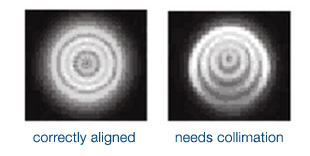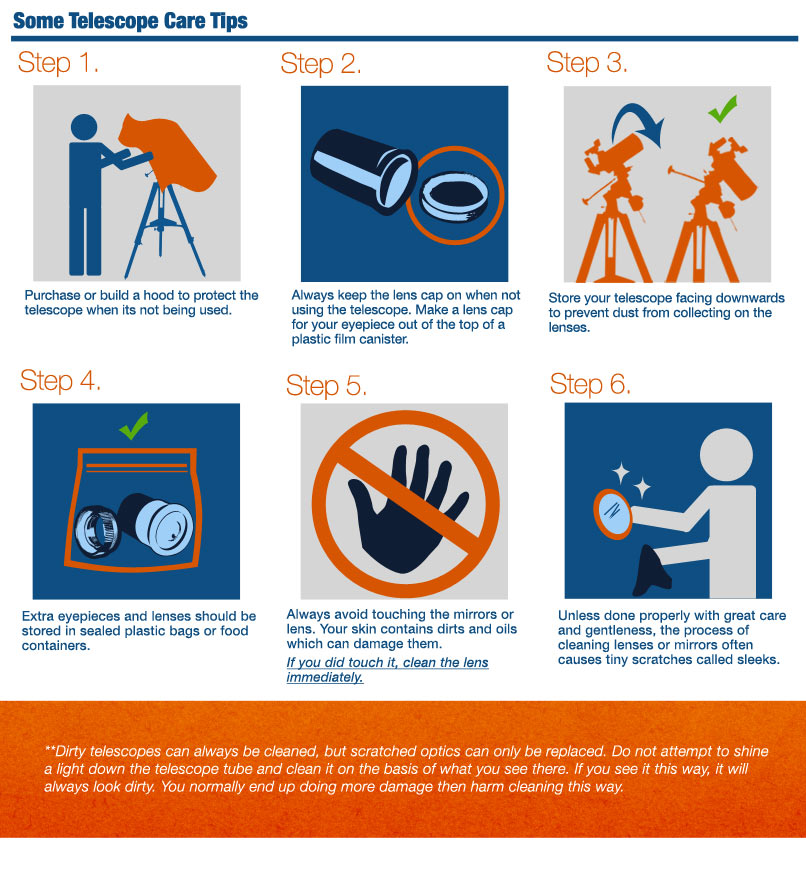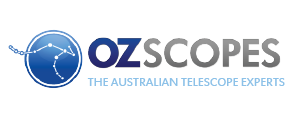Chapter 1
Chapter 2
Chapter 3
Now you need to mount your scope!
Chapter 4
Accessorise, Accesorise (with eyepieces and filters)
Chapter 5
Chapter 6
Caring and Collimating your Telescope
Chapter 7
Solar Observations and a How-To guide on making a solar filter

Buying a telescope is a major step when venturing into astronomy. It is your window to the universe and because of this, it deserves proper maintenance and care. A telescope often operates outside where it will eventually pick up some dust. Depending on the type of telescope you’re using, their mirrors may require some realignment as well. Before you start taking apart your telescope and brushing away those specks of dust, there are some things that you should know when cleaning or maintaining your telescope.
REMOVING DUST AND PARTICLES
Cogdell, Celestron’s product manager of astronomy once said “when you see dust on the lens, you might be inclined to clean it, but every time you do that, you might scratch the coating”. While it may be easy to just grab a brush and start dusting your telescope, that recklessness may cost you the performance of your telescope in the long run.
1. Brushing
You can use a camel’s hair brush or other soft lens brush to clean dust from your telescope. When brushing the lens of your telescope, always remember to brush lightly and that there is always a chance for the brush to scrape the surface of the lens. Wear gloves when handling the cleaning equipment, and always store them away after use.
2. Compressed air/gas
If using a brush doesn’t fancy you, another alternative is to use compressed air/gas to blow off the dust. This removes the possibility of scratching your lens while cleaning. However, a few things to remember when using compressed air is to never shake the can before using it and always vent the first spray away in an open space to remove any particles clogging the nozzle.
3. Cleaning solution
To remove smudges from your telescope lens, it is advisable to use alcohol solutions such as methanol or isopropyl. Apply a few drops of alcohol solution to your cleaning pad of choice and start rubbing gently. NEVER drop the alcohol solution directly onto your lens since any excess might seep down into your telescope.
COLLIMATION
Collimation is an alignment process for reflectors and catadioptric telescopes. The alignment frequency depends on the type of telescope (find out more about types of telescope here) that you have and how often they have moved around. However, catadioptric telescopes tend to require less collimation. The specific types of telescopes that will require collimation are Newtonian reflectors, Dobsonian reflectors, Maksutov Cassegrain, and Schmidt Cassegrain. Further details on how to perform collimation for your telescope are usually mentioned in the manual that comes with your purchase.

The image above shows two Airy discs. If the rings are symmetrical around the disc, you’re good to go and the telescope is properly collimated. If it doesn’t, then it’s time to do some collimation on your telescope. To help with this process, there are some tools that can help you such as a laser collimator or a DIY bulls-eye target from a film canister.
MOISTURE
For refractors and Schmidt-Cassegrain, it is important to keep them away from moisture since they are prone to dew forming at the front due to condensation which will lower their image quality. If the telescope is exposed to moisture, you should leave it out to dry for a few hours before storing them.
EXTRA TIPS

